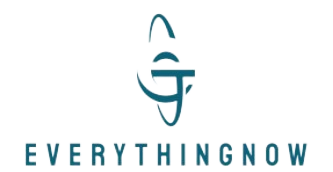How Short Meetings Can Boost Productivity: Tips for Success
Discover the benefits of short meetings and how they improve focus, decision-making, and time management. Learn tips for running effective brief meetings.

In today's fast-paced work environment, time is one of the most valuable resources. Many organizations fall into the trap of lengthy, drawn-out meetings that consume hours of productive time without yielding meaningful results. However, short meetings—typically lasting no more than 30 minutes—are emerging as a powerful tool to enhance productivity and maintain focus in the workplace.
Why Long Meetings Hurt Productivity
- Loss of Focus: Extended meetings can lead to dwindling attention spans, resulting in disengaged participants and ineffective communication.
- Time Drain: Lengthy discussions often stray off-topic, consuming time that could be better spent on actual work.
- Decreased Morale: Employees often view long meetings as unproductive and frustrating, leading to a lack of enthusiasm for future meetings.
The Benefits of Short Meetings
Adopting a culture of concise meetings can transform the way teams work. Here's how:
1. Enhanced Focus and Engagement
Short meetings require participants to focus on key points. A time-limited environment encourages concise communication and ensures everyone remains engaged. With less time available, distractions are minimized, and the discussion stays on track.
2. Clear Objectives
When meetings are brief, they are usually planned with clear objectives in mind. This ensures that the time spent is meaningful and every participant leaves with actionable insights or tasks.
3. Efficient Decision-Making
In shorter meetings, there's no room for endless debates. Teams are more likely to make quick, informed decisions, which speeds up project timelines and reduces bottlenecks.
4. Improved Time Management
Short meetings free up time for employees to focus on their primary responsibilities. By reducing the time spent in conference rooms, teams can allocate more hours to completing tasks and meeting deadlines.
5. Energy Conservation
Participants leave short meetings feeling energized and ready to work, as opposed to drained from sitting through prolonged sessions.
Tips for Running Effective Short Meetings
If you want to implement short meetings in your organization, follow these best practices:
- Set an Agenda: Clearly outline the meeting's purpose and objectives beforehand. Share this agenda with attendees to keep everyone aligned.
- Invite Only Essential Participants: Limit attendees to those who are directly involved in the discussion or decision-making process.
- Timebox Discussions: Allocate a fixed time for each agenda item and stick to it.
- Start and End on Time: Respect everyone’s schedule by beginning and ending the meeting punctually.
- Follow Up with Notes: Summarize the meeting outcomes and share follow-up tasks to ensure accountability.
Examples of Effective Short Meetings
- Daily Stand-Ups: These 15-minute meetings allow teams to quickly discuss progress, roadblocks, and plans for the day.
- Weekly Check-Ins: A 30-minute session to align on goals and provide updates without delving into unnecessary details.
- Brainstorming Sessions: Quick idea-generation meetings where participants contribute fresh perspectives in a limited time frame.
Conclusion
Short meetings are a simple yet effective way to boost productivity, save time, and maintain workplace morale. By keeping discussions concise and focused, teams can achieve more in less time. Implementing short meetings as part of your work culture not only enhances efficiency but also fosters a positive and energized team environment.

 Ashish Kumar
Ashish Kumar 











